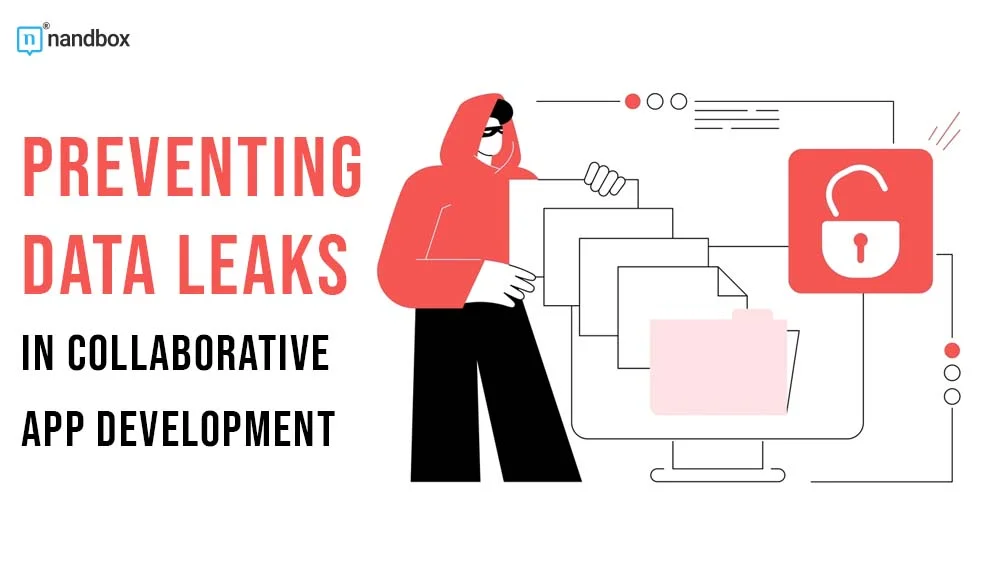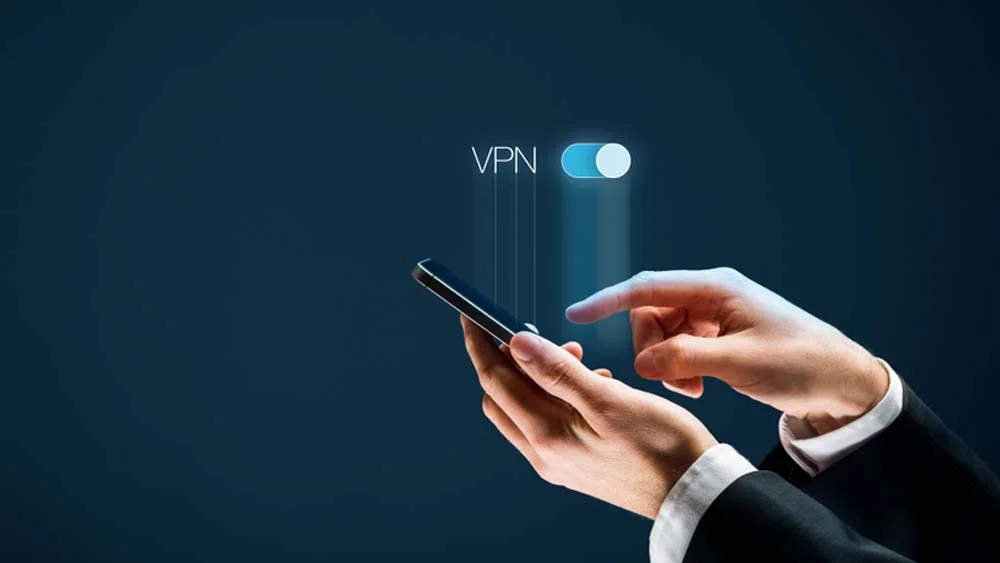Collaboration relies on the sharing of information. However, with many important emails, documents, and files going back and forth between team members, there’s a strong possibility that your sensitive and confidential data can get into the wrong hands. If you accidentally send something to the wrong recipient, it can potentially cause data breaches. That’s why companies must implement the appropriate strategies and ensure they can easily prevent data leaks. Moreover, data leaks can hinder the company’s reputation, compromise customers’ and employees’ sensitive and confidential data, and lead to financial losses.
This detailed guide will explore why companies must implement the best data leak prevention policies to prevent data leaks in their organizations. When it comes to collaborative app development, we are also going to discuss how APIs are crucial in enhancing data protection. We will also discuss the other kinds of technologies that companies can use to prevent data leaks. So, without further ado, let’s get started.
What Is Data Leak Prevention (DLP)?
Data leak prevention involves strategies and tools to protect sensitive and confidential information from unauthorized access. It primarily focuses on three aspects:
1. Data identification: DLP software helps categorize content based on how sensitive it is. For instance, this can include financial records, intellectual property, and confidential customer data. This helps DLP software prioritize data security.
2. Data monitoring: DLP tools can monitor how teams use, transfer, and store data throughout its life cycle, such as by scanning documents for sensitive keywords.
3. Data control: If your DLP solution detects a potential data leakage, it can take appropriate action, such as blocking the transfer, encrypting sensitive data, and sending an alert to investigate further.
Why Do Companies Need DLP Policies?
There are various reasons why companies need to implement the most effective DLP policies, and some of the primary reasons include:
- As humans, we are prone to errors and mistakes. Team members can accidentally attach sensitive and confidential documents to the wrong email or share a folder with more people than was intended.
- Sometimes, improperly configuring access controls or failing to encrypt files can contribute to unintended data exposure.
- Some team members can not be trusted, may have malicious intent, and may deliberately try to steal your sensitive and confidential information.
- According to security reports, malware, misconfigurations, and compromised accounts are the most concerning aspects of data leakage on the cloud. DLP policies allow you to implement the most effective measures so that companies can mitigate these risks.
- Another reason DLP policies are so important is that cybercriminals are becoming more competent at breaching corporate systems and stealing sensitive and confidential data. There have been many reported cases where malicious actors steal sensitive and confidential data through cyber attacks.
How Can You Detect Data Leaks Early On?
To mitigate the risks of data breaches and leaks, a company must identify the onset of data leaks early to prevent further damage. Here’s how they can do it:
1. Use Secret Scanning
Secret scanning helps keep code secure and secrets safe across organizations by scanning and detecting the secrets that were accidentally committed on the entire Git history of every branch in GitHub repositories. Strings that match patterns offered by secret scanning partners or other service providers or defined by your organization are then reported as alerts in the Security tab of repositories. When it’s enabled, secret scanning alerts for users can be detected through the following types of repositories:
- Public repositories owned by organizations.
- Public repositories owned by personal accounts by GitHub.com.
- Private and internal repositories that are owned by organizations using the GitHub Enterprise Cloud.
2. Create An Incident Response Plan
If you’re a larger organization, a data breach is bound to happen, especially with the rise of cybercriminals getting more competent when stealing sensitive and confidential information. Many companies have suffered from data breaches in the past year, and these will continue happening, so it’s always better to be safe than sorry and for tech companies to be prepared for a data breach by having an incident response plan ready. Here’s what you should include in your incident response plan:
- Who needs to be on the response team?
- The process the company will take to identify and contain the breach.
- Any security experts to engage.
- The process required to document the incident.
- The process to notify law enforcement agencies.
- The process to assess the extent of the damage caused by data breaches.
3. Data Breach Monitoring
Another way to prevent a significant data breach before it happens is through data breach monitoring. Data breach monitoring involves monitoring the dark web for sensitive data related to specific individuals, leaked credentials, companies, internal company documents, and PII (Personally Identifiable Information). There are multiple software tools out there that will track millions of online sources, paste sites, and Telegram channels to notify your security team the moment there is mention of your:
- Employee or customer account credentials.
- Internal company emails and documents.
- Login credentials of your company’s C-level executives.
The Role Of APIs In Enhancing Data Security
Regarding collaborative app development, the secret sauce behind many app integrations relies on special tools called APIs (Application Programming Interfaces). APIs help programs understand each other, collaborate effectively, and exchange information. And just like other messengers and interpreters, APIs have to be trustworthy. Data can unintentionally leak if not guarded with the appropriate security tools. To ensure secure and seamless data exchange across multiple platforms, businesses can leverage solutions like GoAnywhere Cloud Connectors. These tools simplify integration with cloud services, enabling secure and automated workflows that prevent unintended data leaks while enhancing productivity. Therefore, you have to ensure that implementing API security is a must and that they can maintain data confidentiality.
Technologies That Companies Can Use To Prevent Data Breaches
Several technologies can be powerful tool to help companies prevent data breaches. Some of the technologies that companies can implement to protect their data include:
1. Artificial Intelligence
AI technology can constantly monitor data flows, identifying unusual patterns or potential emerging threats in real time. It has the potential to alert potential unauthorized personnel and has the intelligence to recognize them.
2. Blockchain
Since Blockchain is decentralized and has immutable records, hacking can be very challenging for malicious actors. This will act as a robust shield for your sensitive and confidential data.
3. Multi-Factor Authentication
MFA adds an extra layer of security by requiring additional verification before you can access data or any online accounts. It also adds a layer of protection to your implemented access control methods to ensure that only authorized users can access the company’s sensitive and confidential data. You must provide a password or biometric verification to access sensitive and confidential data.
The Best Practices To Prevent Data Leaks
Here are the most effective preventative strategies that companies can start implementing. That is to ensure that there are fewer risks of data breaches and more room for collaborative app development.
1. Use A VPN
A VPN encrypts your internet traffic and masks your IP address, ensuring that your ISP, malicious actors, and other third parties cannot intercept your sensitive and confidential information. A dedicated VPN will ensure that all your data is routed through a secure and encrypted VPN tunnel. Additionally, it will keep the company’s sensitive and confidential data safe and secure, preventing anyone from gaining unauthorized access.
2. Encrypt Data
You should apply encryption to sensitive data in transit to protect it from unauthorized interception. This DLP feature allows you to make your files useless and unreadable to anyone who is not authorized to have access to them. This ensures that the company’s sensitive and confidential information remains secure and protected, even if there is a data breach.
3. Strong Authentication Methods
As we mentioned previously, it is essential to implement robust authentication methods like MFA and encourage users to use strong and complex passwords, as this prevents unauthorized access. When choosing a strong password, ensure it includes an uppercase letter, lowercase letter, special characters, and numbers. Also, be sure to use single sign-on methods, as this reduces the need to create and remember passwords for all the different applications.
4. Provide Employee Training
All company employees need to be educated on the best data protection practices to mitigate the risks of data breaches. They should also be educated on the importance of handling enterprise content with caution and understanding the risks of data leaks.
5. Centralize Data On The Cloud
Companies should manage all of their content from one secure location, which allows them to implement stricter data loss prevention measures compared to managing all the security on individual devices. By incorporating enterprise-grade file-sharing solutions, you can leverage the benefits of advanced security and other compliance mechanisms to prevent data leaks and loss of essential data.
Conclusion
Data loss prevention methods are crucial for tech companies to ensure that they don’t incur financial loss or face reputational damage. DLP policies are also crucial when tech companies encourage collaborative app development. This ensures that everything in the company goes smoothly and efficiently and there is no disruption or other potential damage because of data leaks. This guide outlines the best data leak protection methods to begin implementing to mitigate the risks of data leaks and breaches.





